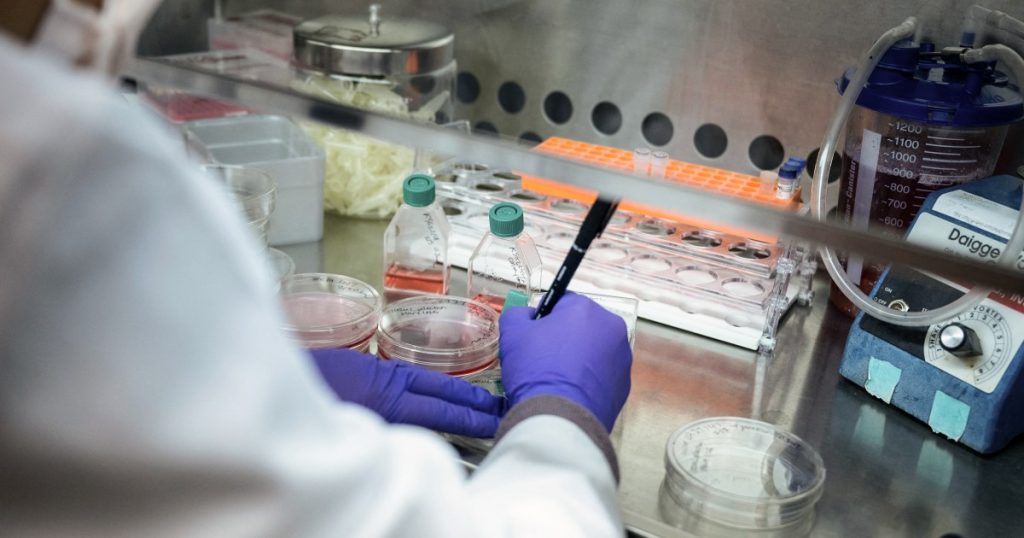A Federal Judge Halts Drastic Cuts to NIH Research Funding
In a significant legal development, a federal judge has temporarily blocked the Trump administration’s controversial plan to slash funding for biomedical research conducted by the National Institutes of Health (NIH). This decision comes in response to a lawsuit filed by 22 state attorneys general, who argue that the proposed changes to how the federal government compensates universities and research institutions for indirect costs would have devastating consequences for scientific research and public health. The lawsuit, led by attorneys general from Massachusetts, Illinois, and Michigan, claims that the NIH violated federal law and ignored congressional directives by attempting to implement the cuts without proper oversight.
Background: The NIH’s Radical Policy Change
The NIH announced on Friday that it would cap indirect funding for research projects at 15%, a drastic reduction from the previous system, which allowed universities and research institutions to negotiate individual rates with the federal government. Indirect costs cover essential expenses such as laboratory equipment, utilities, maintenance, and support staff salaries—costs that are critical to the operation of research facilities. The new policy, which was set to take effect immediately for all new NIH grants and any new expenses on existing grants, would significantly lessen the financial support provided by the federal government to research institutions. This change has been met with widespread criticism from the scientific community, who argue that it would cripple their ability to conduct vital research.
The Legal Challenge: States Fight Back Against NIH
The lawsuit, filed in U.S. District Court in Massachusetts, alleges that the NIH and the Department of Health and Human Services (HHS) violated the Administrative Procedure Act (APA), which governs how federal agencies develop and implement new regulations. The plaintiffs argue that the agencies failed to provide adequate notice or an opportunity for public comment before making such a significant change to the funding structure. Additionally, the lawsuit claims that the Trump administration ignored a provision included in federal budgets since 2018, which explicitly prohibits changes to indirect cost rates. This provision was put in place after earlier attempts by the Trump administration to alter the funding process were met with resistance from Congress.
Immediate Relief: A Temporary Restraining Order
U.S. District Judge Angel Kelley granted a temporary restraining order, halting the implementation of the new policy until a hearing can be held on February 21. The order prohibits NIH and HHS from taking any steps to enforce or apply the new indirect cost rules. This legal intervention provides a temporary reprieve for research institutions across the country, allowing them to continue operating under the previous funding structure while the court considers the merits of the case. The attorneys general involved in the lawsuit have emphasized the urgency of the situation, warning that the policy would lead to layoffs, the suspension of clinical trials, and the closure of laboratories if allowed to proceed.
The Potential Impact on Research and Public Health
Scientists and research institutions have been vocal in their opposition to the NIH’s plan, describing the cuts as draconian and arguing that they would severely hinder the progress of biomedical research. University of California, Berkeley professor Michael Eisen bluntly stated, “If you don’t want research to happen, you can accomplish it this way.” The University of California system, which received $2.6 billion in NIH funding last year, estimates that the cuts would slash hundreds of millions of dollars annually from its research budget, forcing widespread reductions in personnel, services, and research activities. Theresa Maldonado, the University of California’s vice president for research and innovation, warned that the changes would disrupt time-sensitive work in both basic and clinical research, delaying or halting critical studies on diseases and other scientific inquiries.
A Polarizing Debate Over Research Funding
While opponents of the changes argue that the cuts will stifle scientific progress and harm public health, proponents of the NIH’s new policy frame it as an effort to rein in what they describe as out-of-control overhead costs. Katie Miller, an appointee to the Department of Government Efficiency, dismissed the criticism, writing on social media that the changes target “Liberal DEI Deans’ slush fund” and accusing institutions like Harvard of price gouging. However, critics argue that the proposal fails to account for the essential role that indirect costs play in supporting research infrastructure and that it unfairly shifts the financial burden onto universities and research institutions, many of which lack the resources to absorb such a significant loss of funding.
In conclusion, the legal battle over NIH’s indirect cost policy highlights the tension between efforts to control federal spending and the need to sustain robust funding for scientific research. The temporary restraining order provides a much-needed pause, allowing the court to consider the implications of the policy and determine whether it aligns with legal and legislative standards. For now, researchers and institutions can breathe a sigh of relief, but the broader debate over how to fund biomedical research in a fiscally responsible yet scientifically impactful way remains unresolved. This case underscores the importance of maintaining a balanced approach to research funding—one that prioritizes both financial accountability and the advancement of life-saving science.












